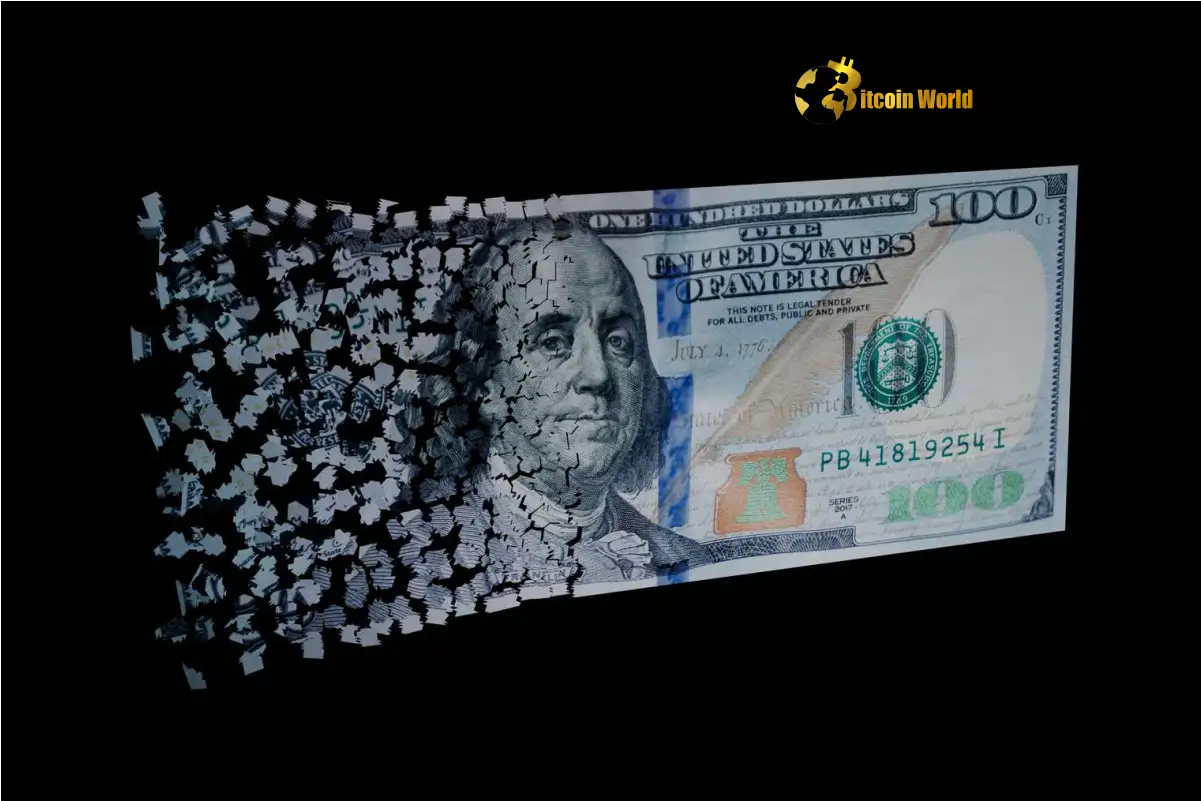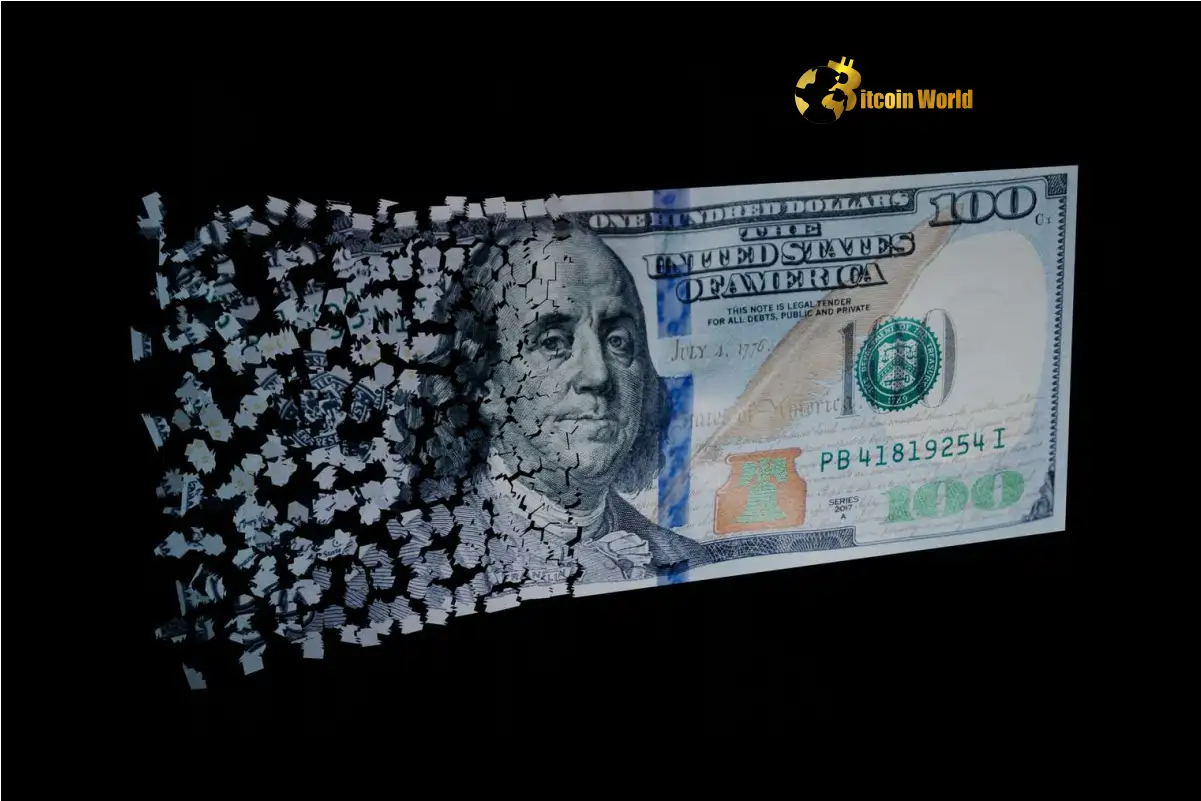Hold onto your hats, crypto enthusiasts! The financial winds are shifting, and a major player, Bank of America (BofA), is waving a red flag about the future of the US dollar. Their FX strategists are not just predicting a slowdown for the dollar; they’re talking about accelerated de-dollarization. In simpler terms, the world’s reliance on the US dollar as the go-to currency might be waning, and faster than we anticipated. What does this mean for the cryptocurrency world, and should we be bracing for impact or preparing for opportunity?
Decoding De-Dollarization: What’s Really Happening?
Let’s break down this buzzword, de-dollarization. It’s essentially the process where countries reduce their dependence on the US dollar in international trade, finance, and reserves. For decades, the US dollar has reigned supreme as the world’s reserve currency. Think of it as the global economic anchor. But, according to BofA’s sharp minds, this anchor might be losing its grip.
Why is this happening now? Several factors are at play, creating a perfect storm for potential US Dollar weakness:
- Geopolitical Shifts: The world stage is becoming increasingly multipolar. The rise of China, the growing influence of blocs like BRICS (Brazil, Russia, India, China, and South Africa), and geopolitical tensions are pushing nations to seek alternatives to the dollar to reduce reliance on a single currency, especially one controlled by a potentially adversarial nation.
- Sanctions and Weaponization of the Dollar: The US has frequently used the dollar’s dominance as a tool for sanctions and foreign policy. This has made some countries uncomfortable and keen to find ways to bypass the dollar system to ensure their economic autonomy and reduce vulnerability to unilateral US actions.
- Emergence of Alternative Financial Systems: We’re witnessing the rise of alternative financial systems, including central bank digital currencies (CBDCs) and, of course, cryptocurrencies. These offer potential avenues to transact and store value outside of the traditional dollar-dominated system.
- Economic Challenges in the US: Mounting US debt, inflation concerns, and potential economic slowdowns can erode confidence in the dollar’s long-term stability and value.
BofA’s strategists aren’t just making guesses; they’re analyzing complex currency trends and economic indicators to arrive at their bearish dollar outlook. Their prediction of “accelerated” de-dollarization suggests they believe these shifts are gaining momentum and could have significant implications for the global financial landscape.
Why Forex Strategists at BofA are Sounding the Alarm
Bank of America’s Forex (FX) strategists are experts in the intricate world of currency exchange rates and global financial flows. When they speak, the market listens. Their bearish stance on the dollar isn’t just a casual observation; it’s a well-researched projection based on their deep understanding of macroeconomic forces.
Here’s why their analysis carries weight:
- Expertise in Currency Markets: FX strategists live and breathe currency markets. They analyze vast amounts of data, track global events, and build sophisticated models to forecast currency movements. Their insights are highly valued by investors and financial institutions worldwide.
- Data-Driven Analysis: BofA’s strategists aren’t relying on gut feelings. Their predictions are grounded in rigorous data analysis, economic modeling, and a thorough understanding of historical trends and current market dynamics.
- Influence on Market Sentiment: Major financial institutions like Bank of America have a significant influence on market sentiment. Their research reports and pronouncements can shape investor expectations and trigger market movements. A bearish dollar call from BofA can contribute to downward pressure on the US currency.
- Early Warning Signals: FX strategists are often among the first to identify emerging trends in the global economy. Their bearish dollar outlook could be an early warning signal of a more profound shift in the international monetary system.
Essentially, when BofA’s FX strategists talk about accelerated de-dollarization and a bearish dollar, it’s not just noise; it’s a signal that something significant could be unfolding in the global economy.
The Bearish Dollar: What Does It Actually Mean?
“Bearish” in financial terms means a negative outlook, a prediction of decline. A bearish outlook on the US dollar means strategists expect its value to decrease relative to other currencies and assets. But what are the real-world implications of a weakening dollar?
| Impact Area | Bearish Dollar Scenario |
|---|---|
| Inflation | A weaker dollar can lead to higher import prices, potentially fueling inflation in the US as imported goods become more expensive. |
| US Assets | A weaker dollar can make US assets, like stocks and real estate, more attractive to foreign investors, as they become cheaper in foreign currency terms. |
| Commodity Prices | Commodities are often priced in dollars. A weaker dollar can lead to higher commodity prices, as it takes more dollars to buy the same amount of commodities. |
| Emerging Markets | A weaker dollar can be beneficial for emerging markets with dollar-denominated debt, as it becomes cheaper to repay those debts. |
| Cryptocurrencies | Historically, a weaker dollar environment has often been correlated with increased interest in alternative assets like cryptocurrencies, as investors seek hedges against dollar devaluation. |
For cryptocurrency enthusiasts, the last point is particularly interesting. If the US Dollar is indeed entering a period of weakness due to de-dollarization, it could create a more favorable environment for cryptocurrencies like Bitcoin and Ethereum. These assets are often seen as alternatives to traditional fiat currencies and stores of value outside of the conventional financial system.
De-Dollarization and Crypto: A Match Made in Financial Heaven?
Could de-dollarization be the catalyst that propels cryptocurrency adoption to new heights? The narrative certainly aligns. As nations and investors look for alternatives to the potentially weakening dollar, cryptocurrencies present themselves as a compelling option. Here’s why:
- Decentralization: Cryptocurrencies are decentralized, meaning they are not controlled by any single government or central bank. This appeals to those seeking to move away from the dollar’s centralized control.
- Limited Supply (for some): Bitcoin, for example, has a fixed supply of 21 million coins. This scarcity is often touted as a hedge against inflation, unlike fiat currencies which can be printed at will.
- Global Accessibility: Cryptocurrencies can be accessed and transacted globally, 24/7, without the need for traditional banking intermediaries. This can be particularly attractive for cross-border transactions and for individuals in countries with unstable currencies.
- Innovation and Growth Potential: The cryptocurrency space is constantly evolving and innovating. New technologies, use cases, and applications are emerging, offering potential for significant growth and value creation.
However, it’s crucial to maintain a balanced perspective. While de-dollarization could be a tailwind for crypto, it’s not a guaranteed rocket ship to the moon. The cryptocurrency market is still volatile and faces regulatory hurdles, technological challenges, and competition from other asset classes.
Navigating the Currency Trends: Is Now the Time to Embrace Crypto?
The prediction of accelerated de-dollarization and a bearish dollar from BofA strategists is a significant development that crypto investors should be paying close attention to. It doesn’t mean abandoning the dollar entirely, but it does suggest that diversification and exploring alternative assets might be prudent strategies.
Actionable Insights for Crypto Enthusiasts:
- Stay Informed: Keep abreast of macroeconomic trends, geopolitical developments, and expert analysis from institutions like Bank of America. Understanding the broader context is crucial for making informed investment decisions.
- Diversify Your Portfolio: Don’t put all your eggs in one basket. Consider diversifying your investment portfolio across different asset classes, including cryptocurrencies, stocks, bonds, and commodities.
- Research Different Cryptocurrencies: The crypto market is vast and varied. Explore different cryptocurrencies beyond Bitcoin and Ethereum, and understand their unique use cases, technologies, and risk profiles.
- Manage Risk: Cryptocurrencies are inherently volatile. Invest only what you can afford to lose and use risk management strategies like dollar-cost averaging and stop-loss orders.
- Long-Term Perspective: De-dollarization is likely to be a long-term trend. Focus on the long-term potential of cryptocurrencies rather than getting caught up in short-term market fluctuations.
Conclusion: De-Dollarization is a Wake-Up Call
The message from BofA’s FX strategists is clear: the era of unchallenged dollar dominance might be drawing to a close, and accelerated de-dollarization is on the horizon. This isn’t just about currency exchange rates; it’s about a potential shift in the global economic order. For cryptocurrency investors, this development presents both challenges and significant opportunities. By understanding the forces driving de-dollarization and the potential role of crypto in a multipolar world, you can position yourself to navigate these evolving currency trends and potentially capitalize on the financial landscape of tomorrow. The bearish dollar outlook might just be the bullish signal crypto has been waiting for.
To learn more about the latest Forex market trends, explore our article on key developments shaping global currency dynamics and alternative financial systems.
[ad_2]
Source link






